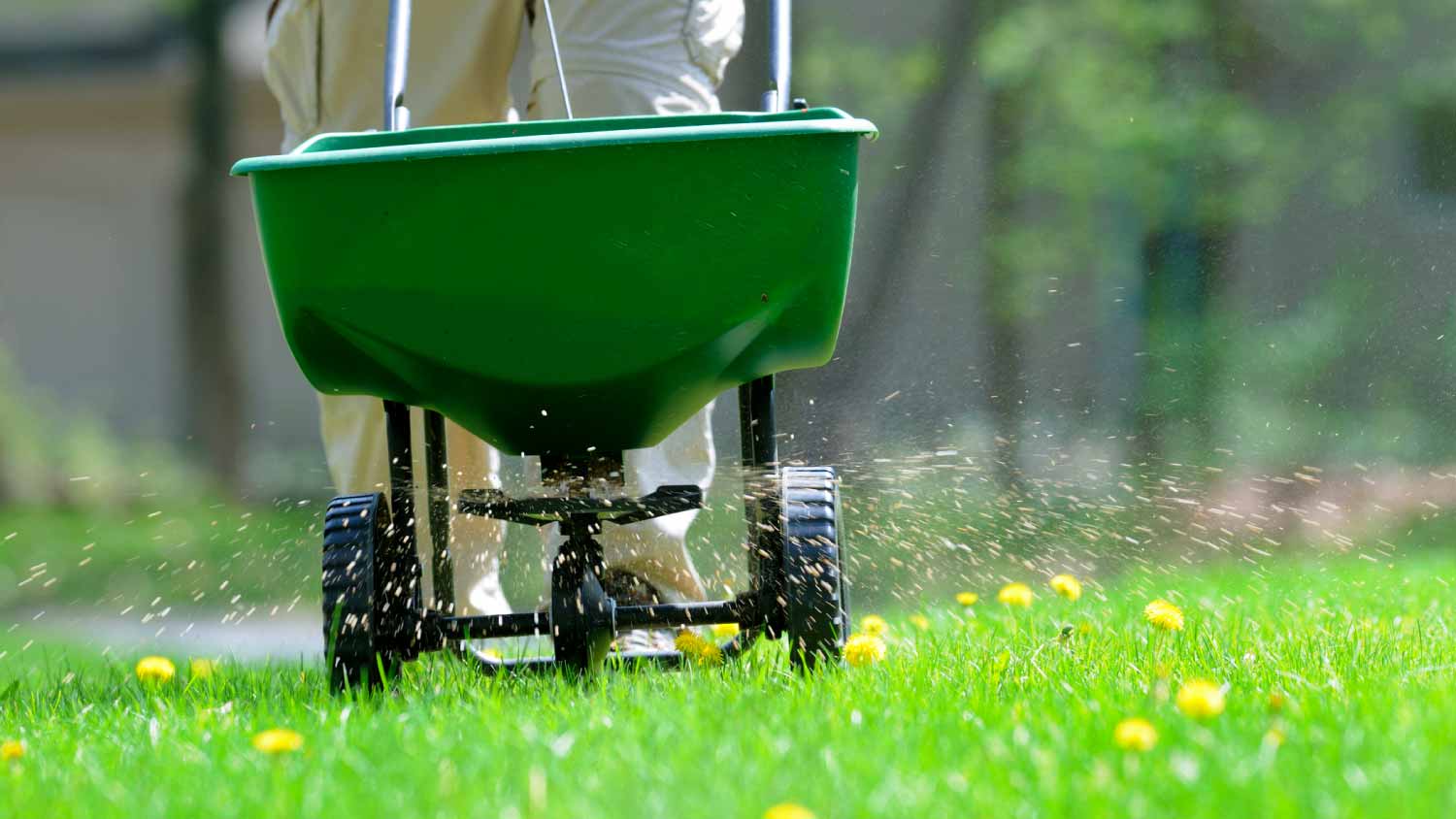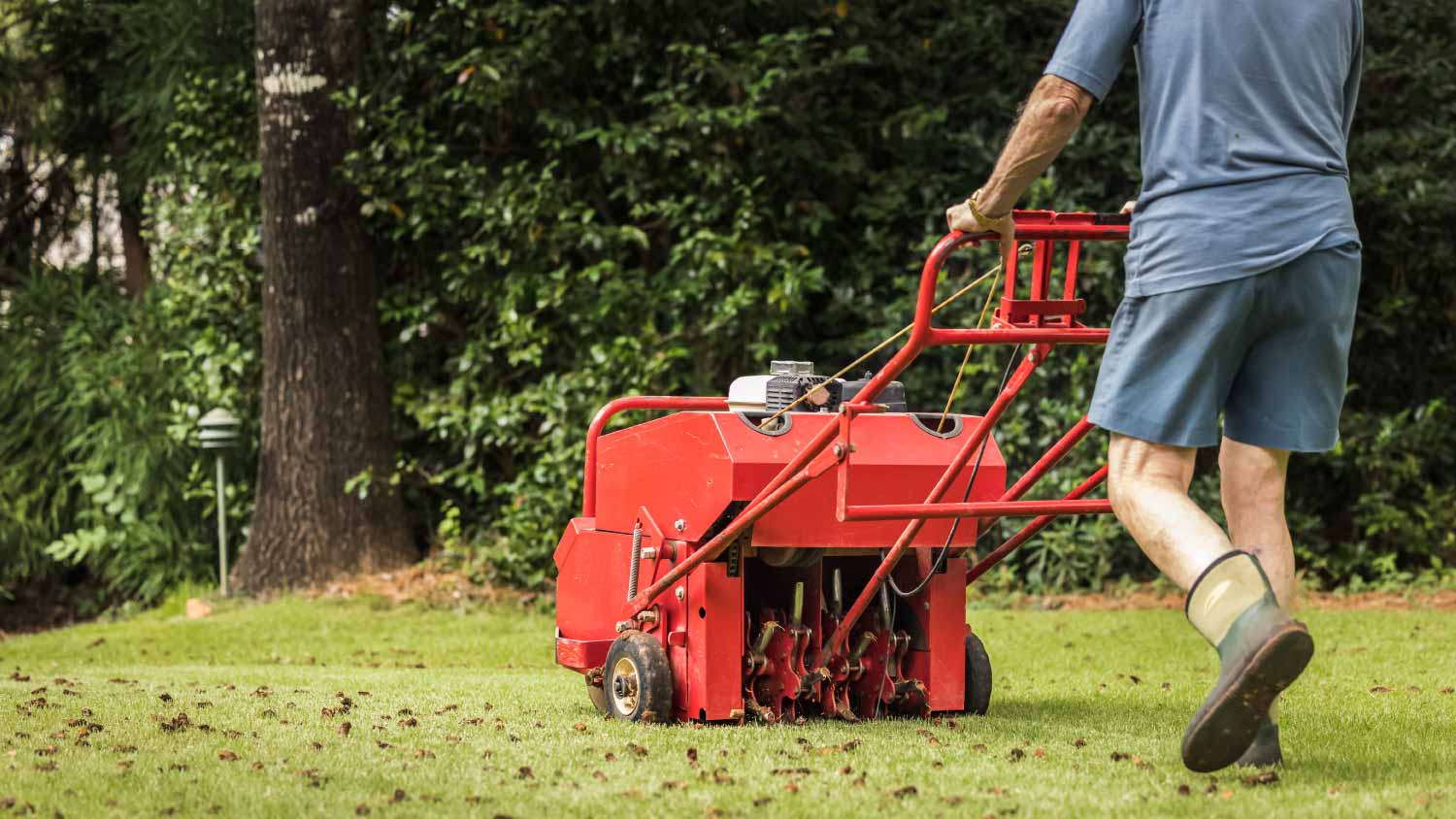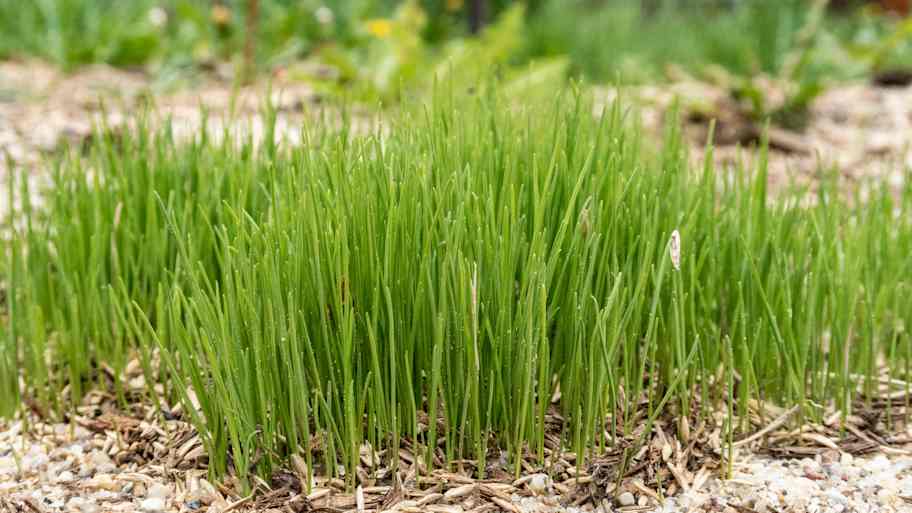
Discover average hydroseeding cost, key price factors, and ways to save. Get transparent estimates for your lawn project and make informed decisions for your home.
Sow seeds for sweet success (or at least a lush lawn)


Power seeding is extremely effective, with 90% of the grass seeds germinating.
Aeration addresses soil conditions more than grass growth, with a 30% germination rate.
Distribution of grass seeds matters just as much as getting the seeds into the soil.
It’s hard to DIY power seeding because of the equipment required.
If your lawn currently looks more like the Petrified Forest than a meadow worthy of your computer's startup screen, you might be pondering your lawn care options. In your quest to make your grass soft and green again, power seeding versus aerating has likely come up. But which one is better for bringing life back to dried out, or even dead, grass? We'll show you the differences between power seeding and aerating to determine which one is best for your lawn.
The goal of both power seeding and aeration is to grow new grass, although both processes accomplish them differently. Lawn aeration is the process of poking holes in your lawn's soil to get it to breathe again and make the soil less compacted. After all, compacted soil is often the root cause of dying grass and other lawn problems.
Frequently, aeration is accompanied by overseeding, which is when grass seeds are planted into the existing turf. Both are different from power seeding, a process using specialized equipment to loosen up the soil while also planting grass seeds directly into the ground.

Power seeding is a fine-tuned process that cuts into your lawn's soil to ensure that grass seeds are firmly planted and will germinate. Sharp tractor blades designed for power seeding cut through your lawn so that grass seeds can get in the soil without the blades damaging the grass you already have. Because the grass goes into the soil instead of sitting on your lawn, it has an incredibly high germination rate.
| Pros | Cons |
|---|---|
| Very high germination rate | Incredibly expensive |
| Grows thick and healthy grass | Ineffective in compacted soil |
| No seeds are wasted | Hard to DIY |
| Naturally eliminates weeds | Uneven seeding and poor timing can have disastrous outcomes |
Best for:
Patchy lawns
Areas where there is no turf at all
Lawns with long-term growth issues
As the name implies, power seeding is a turbo boost for your lawn. It's a highly effective method of planting new grass quickly, with the highest germination rate of all the different lawn care options.
Power seeding also fixes shoddy turf and can create new turf in areas with bare dirt. Unlike randomly tossing grass seed onto the lawn like one does when playing Stardew Valley, power seeding is more likely to have optimal distribution. If the timing is optimal for planting new grass seeds, power seeding can crowd out weeds from growing in your yard.
The biggest drawback of power seeding is that it's an incredibly expensive endeavor. If you want to try planting the seeds yourself, it costs about $100 to $400 for a 50-pound sack of grass seed. However, that doesn’t count the prohibitively expensive and complex equipment required for power seeding. This makes it more viable for you to call a local lawn seeding company if you’re interested in power seeding.
Poor soil conditions can also make power seeding useless. If the soil is too compacted—a problem solved with lawn aeration—power seeding won’t be very effective, which equates to a great deal of money wasted.
Although power seeding has more precision with seed distribution than hand-tossing grass seeds into the dead patches of your lawn, there’s still a margin for error. This margin widens if you’re power seeding at the wrong time of year, which varies based on the local climate.

Lawn aeration is a process that loosens up compacted soil and improves soil quality by poking holes in it. It helps your lawn breathe again. Most people need to aerate their lawns once a year, but some can go every two or three years between aerations (and others may even need more frequent aeration).
Certain soil conditions, like rocky and clay-filled soils, compact more easily. Yards and lawns with heavy foot traffic also compact faster, so large households and party hosts might need to aerate more than once a year. Because aeration opens up the soil, it improves germination rates when grass seeds are tossed on the lawn.
| Pros | Cons |
|---|---|
| Loosens up compacted soil | Can dry out the grass if aerated too often |
| Highly sustainable—reduces waste | Grass growth is slow |
| Improves soil quality in the long run | Could have uneven seed distribution |
Best for:
Compacted soil
Patchy lawns
New construction and recent renovations
Existing turf that looks brown
Lawn aeration is meant to combat compacted soil, which is often the root cause of why grass isn’t growing. Compacted soil can make grass grow very sickly and prone to disease, so aeration provides the right conditions for grass to grow like gorgeous green velvet. Because aeration involves pulling up plugs of soil, aerating beforehand means grass seeds are more likely to germinate than if you were to hand-toss them on the turf and hope for the best.
Aerating doesn’t produce the robust results that power seeding does. It has a much lower germination rate, and the holes created in the aeration process might not distribute the grass seeds optimally. While aerating then overseeding in some patches of your lawn may make it look better, it isn’t going to be as thick and lush as power seeding growth. Only existing turf can be aerated.
Let’s see which method comes out on top in a few key categories: cost, efficiency, DIYability, and results.
The average cost for lawn aeration is around $210, while the average cost to seed a lawn is $1,100, although power seeding can be significantly higher. Power seeding is often cost-prohibitive, which is why it tends to be done in small patches where the grass has been dead year-round.
Think of power seeding as hiring a cleaning service to deep-clean your home, while aeration is a simple pass with a vacuum and mop. Some homes will look shiny and new with dust-free shelves and a mopped floor, and these tasks need to be done regardless. Other homes will look like they still need a lot of work, no matter how hard you scrub.
Power seeding is an extremely targeted process that strictly addresses dying grass and grass seeds that won't germinate. Aeration improves the soil quality and should be done regularly, but it may or may not solve the problem depending on the cause and severity.
Aerating is by far the better option for savvy DIYers. You can rent an aerator for about $100 per day, which is usually all you need it for. There are also many types of aerators, each with their own difficulty level. Motorized aerators take about as much effort as mowing your lawn with a push mower—a simple task for most.
Power seeders are much more costly overall, and they’re far more complex to operate. You’re better off calling a local lawn seeding company to do the job if you really want to power seed.
You can see new grass in as little as 7 to 21 days, in addition to a germination rate of up to 90%, when you power seed. The grass that grows is much thicker and healthier than the old undergrowth. Only about 30% of the grass seeds in aerated soil germinate before becoming gourmet squirrel food or compost, and it can take months before you’ll know how effective it was.
From average costs to expert advice, get all the answers you need to get your job done.

Discover average hydroseeding cost, key price factors, and ways to save. Get transparent estimates for your lawn project and make informed decisions for your home.

Discover the cost to fertilize your lawn, including average prices, key factors, and tips to help homeowners budget for a lush, healthy yard.

Discover average lawn aeration cost, key price factors, and tips to save. Get a clear estimate for your yard and learn how to choose between DIY and hiring a pro.

Ready to give your yard a fresh start? With these tips for grass seed planting, your lush lawn dreams are one step closer to becoming a reality.

When your grass keeps dying where a tree used to be, it’s likely because there is a nutrient deficit in the soil in that area. Here’s how to fix it.

Grass seeds thrive in soil rich in nutrients, but a potting mix will not support your grass’ long-term health. Find out which type of soil is best for grass.